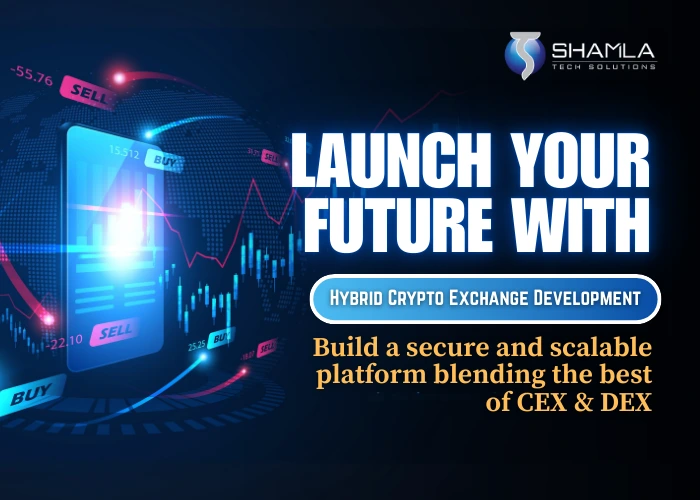Building a successful cryptocurrency exchange in 2025 is a complex but rewarding endeavor. Whether you want to build a secure and scalable crypto exchange from scratch, create a cryptocurrency exchange platform, or even start a cryptocurrency exchange like Bybit or Binance, there are many technical, regulatory, and business considerations that must be addressed.
This comprehensive guide will walk you through the key aspects of how to build a secure and scalable crypto exchange, incorporate the latest industry trends including Regenerative Finance (ReFi), cover different types of exchanges, costs, security, community building, and pain points to overcome.
Building a Secure Crypto Exchange
To build a secure and scalable crypto exchange, the primary objective is to build a secure crypto exchange, a trusted platform where users can safely trade digital currencies. Security and scalability are foundational to protect user assets and accommodate growth, while seamless user experience and regulatory compliance ensure long-term success.
Types of Crypto Exchanges and Their Uses
Lets Build a Secure and Scalable Crypto Exchange. Understanding the types of crypto exchanges and their uses is vital before you launch your cryptocurrency exchange or build cryptocurrency exchange platform:
- Centralized Exchanges (CEX): Operate with a central authority managing order books and custody of assets. Best for liquidity and fast transactions.
- Decentralized Exchanges (DEX): Peer-to-peer trading without a central custodian. Prioritize privacy and censorship resistance.
- Hybrid Exchanges: Combine the best of centralized and decentralized systems, offering speed, liquidity, and security.
- OTC and P2P Platforms: Allow large or direct trades outside public order books, useful for institutional clients and private users.
Choosing the right model depends on your target audience, business goals, and technical capacity. You can also read about What Is Regenerative Finance (ReFi) and How Does It Work in Crypto? Or ReFi vs DeFi: The Future of Sustainable Finance in Crypto.
Essential Components for Building a Secure Crypto Exchange
1. Robust Security Infrastructure
Multi-Layer Security Architecture: To Build a Secure and Scalable Crypto Exchange, there is need of Security forms the backbone of any successful cryptocurrency exchange platform. Implement these critical security measures:
Cold Storage Solutions:
- Store 95% of funds in offline cold wallets
- Use multi-signature wallets for enhanced protection
- Implement hardware security modules (HSMs)
Advanced Authentication Systems:
- Two-factor authentication (2FA) mandatory for all users
- Biometric authentication for mobile applications
- Device fingerprinting and behavior analysis
Real-Time Security Monitoring:
- 24/7 security operations center (SOC)
- Automated threat detection systems
- Regular security audits and penetration testing
2. Scalable Architecture Design
Microservices Architecture: Build your crypto exchange using microservices to ensure scalability:
Core Services:
- User management and authentication
- Order matching engine
- Wallet management system
- Payment processing gateway
- KYC/AML compliance module
Database Optimization:
- Use distributed databases for high availability
- Implement database sharding for improved performance
- Set up read replicas for better query performance
Cloud Infrastructure:
- Deploy on multiple cloud providers for redundancy
- Use auto-scaling groups for dynamic resource allocation
- Implement content delivery networks (CDNs) for global reach
3. High-Performance Trading Engine
Order Matching System: Build a Secure and Scalable Crypto Exchange and the heart of any crypto exchange is its trading engine:
Low-Latency Processing:
- Process thousands of orders per second
- Implement in-memory databases for faster execution
- Use advanced algorithms for optimal order matching
Real-Time Data Feeds:
- WebSocket connections for instant price updates
- Market depth charts and trading indicators
- Real-time portfolio tracking and notifications
Key Steps to Build a Secure and Scalable Crypto Exchange
Here are the essential phases involved to build a secure and scalable crypto exchange:
- Planning and Architecture Design
Lay out functional requirements such as user registration, trading pairs, order matching, wallet integration, and security protocols.
- Technology Selection
Use reliable programming languages (e.g., Python, JavaScript), server infrastructure, blockchain nodes for integration, and databases (like MongoDB or PostgreSQL) capable of high throughput.
- User Interface Development
Develop an intuitive, responsive, and accessible UI using modern frameworks like React or Angular to simplify trading and account management.
- Backend Development
Create a robust backend to handle complex tasks: order matching engine, trade execution, APIs for liquidity, real-time data stream, and user authentication.
- Wallet Integration and Multi-Currency Support
Implement secure wallets managing deposits/withdrawals of multiple cryptocurrencies. Support multi-currency development services to cater to a broad user base with diversified assets.
- Security Implementation
Utilize state-of-the-art encryption, two-factor authentication (2FA), cold wallets for asset storage, DDoS protection, and code audits to safeguard funds and data.
- Regulatory Compliance
Incorporate KYC (Know Your Customer), AML (Anti Money Laundering), and reporting mechanisms to comply with relevant laws in your operating jurisdictions to Build a Secure and Scalable Crypto Exchange.
- Testing & Deployment
Conduct functional, security, and performance testing before deploying on secure cloud hosting services with scalable infrastructure.
- Customer Support and Community Building
Offer 24/7 support and foster engagement by building a strong crypto community via educational content, social media, and interactive forums.
How to Start a Bybit-like Crypto Exchange Platform?
How to Start a Bybit-like Crypto Exchange Platform like Bybit, focus on advanced features:
- Margin and derivatives trading
- Customizable UI with real-time data visualization
- High liquidity and fast order matching
- Robust risk management
- Marketing to attract traders
- Compliance with financial regulations
Build a Secure and Scalable Crypto Exchange with Bybit clone scripts or white-label solutions can accelerate development but require careful customization for security and scalability.
What Is Regenerative Finance (ReFi) and How Does It Work in Crypto?
Regenerative Finance (ReFi) is an emerging approach that integrates sustainability and social impact into crypto ecosystems. Unlike traditional finance focused on profit extraction, ReFi aims to build economic activities that restore environmental and social systems.
ReFi leverages blockchain’s transparency for verifiable climate positive initiatives like carbon credit tokenization, decentralized crowdfunding for green projects, and programmable incentives to reward sustainable behaviors.
ReFi vs DeFi: The Future of Sustainable Finance in Crypto
DeFi (Decentralized Finance) focuses on disrupting traditional finance with permissionless, open protocols.
ReFi adds a new dimension by prioritizing ecological sustainability and equity.
The future of crypto finance likely merges both, powering platforms that are not only decentralized but regenerative—benefiting planet and people alongside profit.
Estimated Cost for Crypto Exchange Development
What is the estimated cost for crypto exchange development?
Here are the The estimated cost for crypto exchange development varies widely based on features and scale:
Development Stage | Estimated Cost (USD) |
Discovery & Planning | $5,000 – $10,000 |
UI/UX Design | $6,000 – $12,000 |
Frontend Development | $10,000 – $20,000 |
Backend Development | $20,000 – $40,000 |
Blockchain Integration | $8,000 – $15,000 |
Wallet Development | $7,000 – $15,000 |
KYC/AML Integration | $4,000 – $8,000 |
Liquidity Integration | $6,000 – $12,000 |
Payment Gateway Integration | $4,000 – $10,000 |
Security Implementation | $8,000 – $15,000 |
Testing & QA | $6,000 – $12,000 |
Deployment & Hosting | $3,000 – $7,000 |
Maintenance & Support | $10,000 – $20,000/year |
Multi-Currency Development Services
To cater to global users, opt for multi-currency development services supporting numerous cryptocurrencies and tokens. This includes:
- Seamless API integration for different blockchain nodes
- Secure custodial and non-custodial wallet options
- Real-time currency balance updates
- Support for stablecoins, altcoins, and popular tokens
How Do I Buy a Crypto When It First Comes Out?
Confused about How Do I Buy a Crypto When It First Comes Out? Buying new crypto coins on launch involves:
- Monitoring token announcements on platforms like CoinMarketCap or social media
- Using IDOs (Initial DEX Offerings) on decentralized launchpads
- Participating early on CEX listings by creating accounts and verification
- Exercising caution for scam tokens and verifying project legitimacy
How to Build a Strong Crypto Community?
A vibrant community is essential for sustaining your exchange:
- Define a clear mission and value proposition
- Use platforms like Telegram, Discord, Reddit, and Twitter to engage users
- Share consistent updates, educational content, and host AMAs
- Launch rewards, contests, and referral programs
- Gather feedback and adapt your platform accordingly
Step-by-Step Development Process
Phase 1: Planning and Research
Market Analysis:
Study competitors and identify market gaps
Define your target audience and geographic focus
Analyze regulatory requirements in target jurisdictions
Technical Specifications:
Choose appropriate blockchain networks to support
Define supported cryptocurrencies and trading pairs
Plan integration with payment processors and banks
Phase 2: Legal and Regulatory Compliance
Licensing Requirements:
Obtain necessary cryptocurrency exchange licenses
Register as a Money Services Business (MSB) where required
Comply with local financial regulations
KYC/AML Implementation:
Integrate identity verification services
Implement transaction monitoring systems
Establish compliance reporting procedures
Phase 3: Core Development
Backend Development:
Build REST APIs for all exchange functions
Implement robust error handling and logging
Create admin panels for operations management
Frontend Development:
Design intuitive user interfaces for web and mobile
Implement responsive design for all devices
Create advanced trading interfaces with charts and indicators
Multi-Currency Development Services: Implement comprehensive multi-currency support:
Support for major cryptocurrencies (Bitcoin, Ethereum, etc.)
Integration with various blockchain networks
Automatic price feeds from multiple data sources
Multi-fiat currency support for global users
Phase 4: Security Implementation
Penetration Testing:
Conduct thorough security assessments
Test for common vulnerabilities (SQL injection, XSS, etc.)
Implement bug bounty programs for ongoing security
Insurance and Risk Management:
Secure comprehensive insurance coverage
Implement risk management protocols
Create incident response procedures
Which Platform or App Is Safe for Trading in Cryptocurrency?
Which Platform or App is Safe for Trading in Cryptocurrency? This safety depends on:
- Reputation and regulatory compliance of the exchange
- Strong encryption and 2FA implementations
- Cold wallet storage of funds
- Transparent fee structures
- Responsive customer support
Seven Pain Points to Overcome on Crypto Exchanges
- Security threats and hacking risk
- Regulatory uncertainty and compliance burden
- User onboarding complexity (KYC/AML)
- Liquidity shortages leading to slippage
- High operational costs and scaling challenges
- Poor user experience and interface design
- Customer trust and dispute resolution
Pain Points and Opportunities of Crypto Payments
Here are the 7 Pain Points to Overcome on Crypto Exchanges and Pain Points and Opportunities of Crypto Payments face these challenges:
- Volatility and price fluctuations
- Slow settlement times on some blockchains
- Regulatory acceptance issues
- Usability and merchant adoption hurdles
Yet, opportunities bloom in enabling global remittances, micropayments, quick cross-border transfers, and integrating ReFi for green finance.
Launch Strategy and Market Entry
Pre-Launch Preparation
Beta Testing:
Conduct extensive testing with limited users
Gather feedback and implement improvements
Test all security measures thoroughly
Marketing and Community Building: Learning how to build a strong crypto community is essential:
Develop social media presence across platforms
Create educational content about cryptocurrency trading
Partner with influencers and industry experts
Implement referral programs and incentives
Go-to-Market Strategy
Soft Launch:
Limited geographic release
Gradual feature rollout
Monitor system performance closely
Full Launch:
Comprehensive marketing campaign
Partnership announcements
Trading competitions and promotions
Future-Proofing Your Exchange
Emerging Trends and Technologies
Regenerative Finance (ReFi) Integration: Understanding what is Regenerative Finance (ReFi) and how it works in crypto is becoming crucial:
Environmental sustainability focus
Carbon credit trading capabilities
Impact investment features
ReFi vs DeFi Considerations:
Incorporate sustainable finance principles
Balance profitability with environmental responsibility
Implement ESG (Environmental, Social, Governance) metrics
Advanced Trading Features:
AI-powered trading algorithms
Social trading capabilities
Cross-chain interoperability
Where Do I Start to Build a Bitcoin Exchange Site?
Thinking about Where do I start to build a Bitcoin exchange site? Thoroughly researching market and regulatory factors
Defining your exchange model and target users
Choosing a skilled blockchain development company
Designing scalable architecture prioritizing security
Integrating trading engines, wallets, and liquidity sources
Testing exhaustively before public launch
Conclusion
To Build a secure and scalable crypto exchange requires significant investment in technology, security, and compliance. Success depends on careful planning, robust architecture, and unwavering commitment to user security and regulatory compliance. By following this comprehensive guide and staying current with industry trends, you can build a cryptocurrency exchange platform that not only meets today’s requirements but also adapts to future market demands.
Remember that Build a Secure and Scalable Crypto Exchange is just the beginning. Continuous improvement, security updates, and feature enhancements are essential for long-term success in the competitive cryptocurrency trading landscape. Focus on building trust with your users through transparency, security, and reliable service delivery, and your exchange can become a leading platform in the digital asset ecosystem.
FAQs
- How long does it take to build a secure and scalable crypto exchange?
The timeline varies depending on the scope, features, and resources. A basic MVP (minimum viable product) with essential features can take 4–6 months, while a fully loaded, enterprise-grade crypto exchange with advanced security, multi-currency support, and compliance features may require 9–12 months or longer. Factors affecting the timeline include design iterations, backend development complexity, API integrations, liquidity partnerships, wallet infrastructure, KYC/AML implementation, and comprehensive testing. Using a white-label solution can shorten development time but may limit customization compared to a fully custom-built platform.
- What security measures are essential when building a cryptocurrency exchange?
Security is the cornerstone of any crypto exchange. Key measures include two-factor authentication (2FA) for users, biometric login options, SSL encryption, DDoS protection, robust firewalls, and regular code audits. Cold wallet storage for the majority of funds is crucial to minimize hacking risks. Implement intrusion detection systems and multi-signature wallets for withdrawals. Periodic penetration testing helps identify and fix vulnerabilities before launch. Partnering with security audit firms for ongoing monitoring ensures that the exchange stays compliant with global standards while safeguarding against evolving threats.
- How much does it cost to build a cryptocurrency exchange platform?
The cost to build a secure and scalable crypto exchange can range from $60,000 for a basic version to over $250,000 for an enterprise-grade platform. Expenses include planning, UI/UX design, backend and frontend development, wallet integration, payment gateway setup, KYC/AML compliance modules, liquidity connections, and extensive security protocols. Additional costs cover hosting infrastructure, legal consultation, and maintenance post-launch. While white-label solutions are cheaper and faster to deploy, custom-built exchanges offer greater flexibility, unique branding, and long-term scalability to match evolving market demands.
- Which is the best company for cryptocurrency development?
The best development partner depends on your budget, feature requirements, and desired level of customization. Leading blockchain development companies like HashCash Consultants, Blockchain App Factory, and Antier Solutions have extensive experience in delivering secure, scalable platforms. When choosing, assess their past crypto projects, security expertise, client feedback, and post-launch support services. A good development partner offers end-to-end services—from initial consultation and compliance guidance to exchange deployment and marketing support—while staying abreast of industry trends like ReFi and DeFi integration.
- How do I ensure my crypto exchange is scalable as user demand grows?
To maintain performance under heavy load, adopt a microservices architecture that allows independent scaling of modules like the order-matching engine, wallet system, and API services. Use high-performance cloud hosting solutions like AWS or Google Cloud with auto-scaling capabilities. Integrate robust database systems (MongoDB, PostgreSQL) optimized for high read/write speeds. Employ load balancing and caching systems to handle traffic spikes. Continuous infrastructure monitoring and periodic stress testing ensure that your exchange can handle increasing transaction volumes without downtime or performance lags.






